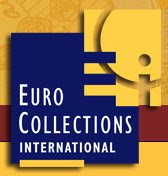
Austria 2012 100€ Imperial Crown of Austria Gold Proof
The obverse depicts the intricate details of the crown. It is made up of three parts: a circle, a high arch and a mitre. From the base or the circle are 8 lilies, an important reflection of the Crown of the Holy Roman Empire which is made of 8 panels. The high arch of the Imperial Austrian Crown also mirrors the high arch of the Holy Roman Empire Crown.
The base of the Austrian Imperial crown is very intricately crafted and set with many precious stones such as zircons and pearls. The mitre consists of two halves, which are intricately engraved and decorated with fine enameled bands of birds and plants. The two halves are delicately engraved with four different scenes representing key moments in the life of Rudolf II. From the halves and in the middle of the crown the high arch rises, set with 8 diamonds and an emerald at the top to symbolize heaven.
Also located on this side of the coin are the country of issue “Republik Oesterreich” (Republic of Austria), the face value of 100 euros, the year of issue 2012 and the words “Die Oesterreichische Kaiserkrone” Austrian Imperial Crown. A ring of tiny pearls along the outer edge encircles both sides of the coin. This side of the coin was designed by the Austrian Mint’s chief engraver Thomas Pesendorfer. Thomas states that he spent well over 40 hours to painstakingly carve the minute details of the elaborate crown into the plaster model.
The reverse of the coin features a depiction of Emperor Francis Joseph I in the imperial robes of the Austrian Empire. The image is based on a painting by Julius Viktor Berger, which currently hangs in the Vienna Supreme Court of Justice. The Emperor is depicted with the richly embroidered robe, and over his shoulders is the mantle of the Austrian Empire made of white silk, red velvet and ermine. On the left side of the mantle are four elaborately decorated orders of the House of Habsburg. From the heavy gold chain across his chest hangs the Order of the Golden Fleece. He is holding the Imperial spectre which, similar to the Imperial crown, is decorated with enamel and set with precious stones and pearls. The Imperial crown rests on a lush cushion in the lower right side of the coin design field, while in the background is the double-headed eagle insignia of the Austrian Imperial dynasty.
This reverse was engraved by mint engraver Helmut Andexlinger. Helmut did give the Emperor a slightly more friendly look in the coin portrait than in the original painting. Helmut found it “very challenging” to carry out the very lengthy engraving work and execute the significant number of very fine details to eventually be included on a coin that has a diameter of only 30 mm.
The Habsburg dynasty, which lasted over 800 years, did not believe that coronations were necessary because it was a hereditary right. The Imperial Crown and the robes were used for the ceremonial investiture rather than a coronation.
The Imperial crown of Austria was originally the personal crown of Rudolf II and crafted in 1602. It is considered one of the best European examples of the art of goldsmithing of this time. Jan Vermeyen of Antwerp was summoned to Prague to craft this very elaborate pure gold crown. Fortunately, this spectacular crown was not dismantled after the death of Rudolf II but succeeded to exist in regal splendour to this day. It is kept in the Imperial Treasury or Schatzkammer located in the Imperial Palace in the center of the city of Vienna.
The order of the Golden Fleece is one of the most prestigious orders of Europe, (the other being England’s Order of the Garter) founded by Duke Philip and Princess Isabella of Portugal on the occasion of their marriage in 1430. The order still exists today and the current head is Karl Habsburg-Lothringen. Other members today include fellow royals from Europe.
The Order of the Golden Fleece was restricted to a limited number of knights. The power of the Order of the Golden Fleece was mighty with the king, who was also the sovereign head of the order, consulting with the members of the order before going to war, and deciding on most corner stone strategic moves of a kingdom. As well, performance of members was also critically reviewed by fellow knights, and punishment was meted out when deemed necessary and signed off on by 6 fellow knights.
The new 100 Euro gold coin is struck in proof quality (reverse frosting) with a maximum mintage of 30,000 pieces. It has a diameter of 30 mm., contains 16 grams of gold and is .986 fine. Each coin is encapsulated and comes in a box with a numbered certificate of authenticity.
A unique lapel pin plated with gold and bearing a miniature version of the Imperial Crown of Austria also accompanies each gold coin.
This coin is available through Euro Collections International





No comments:
Post a Comment